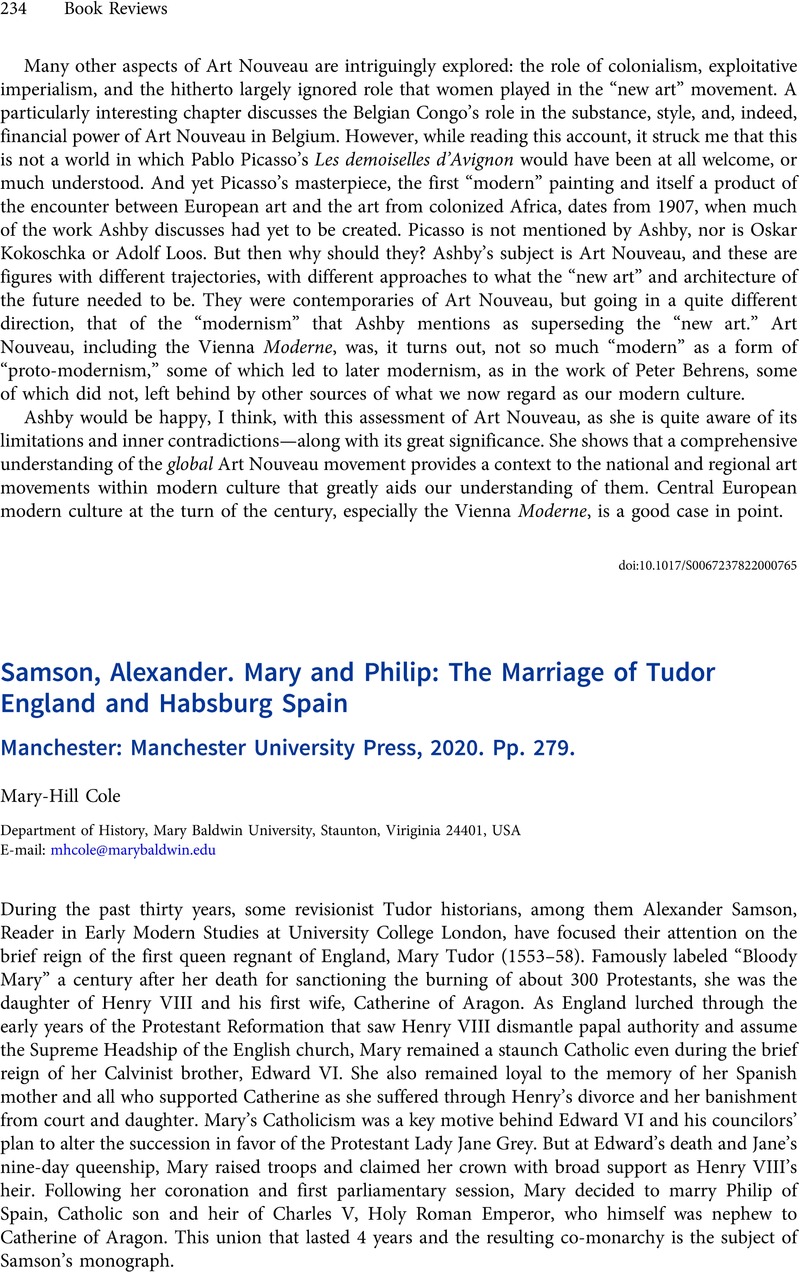No CrossRef data available.
Article contents
Alexander Samson. Mary and Philip: The Marriage of Tudor England and Habsburg Spain Manchester: Manchester University Press, 2020. Pp. 279.
Review products
Alexander Samson. Mary and Philip: The Marriage of Tudor England and Habsburg Spain Manchester: Manchester University Press, 2020. Pp. 279.
Published online by Cambridge University Press: 27 January 2023
Abstract
An abstract is not available for this content so a preview has been provided. Please use the Get access link above for information on how to access this content.

Information
- Type
- Book Review: To 1848
- Information
- Copyright
- Copyright © The Author(s), 2023. Published by Cambridge University Press on behalf of the Center for Austrian Studies, University of Minnesota


